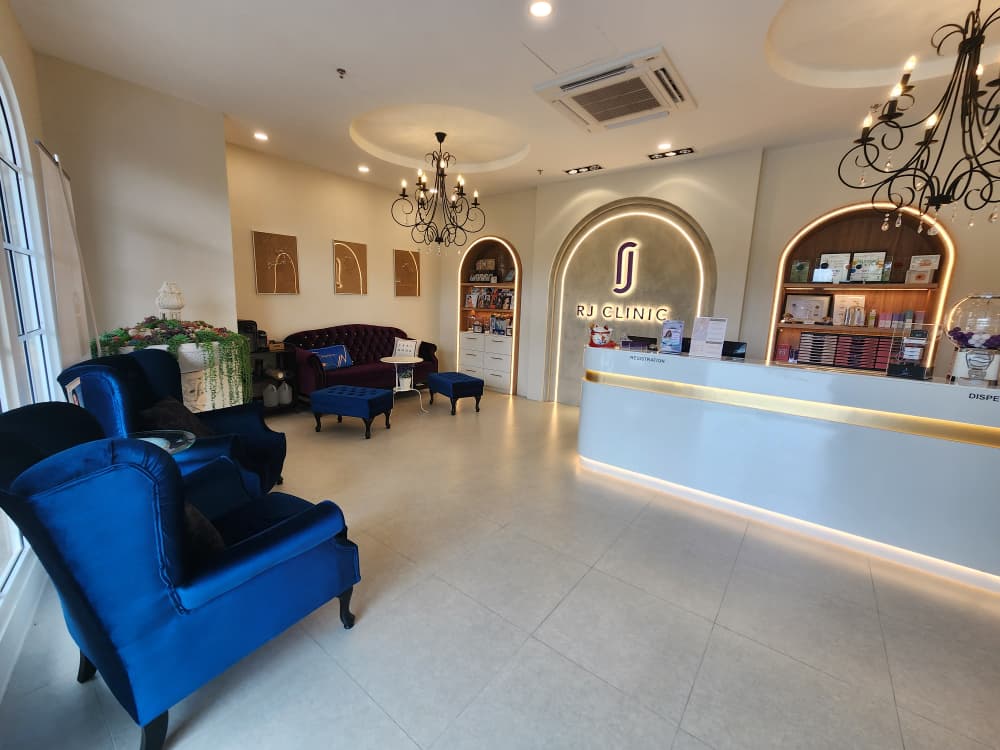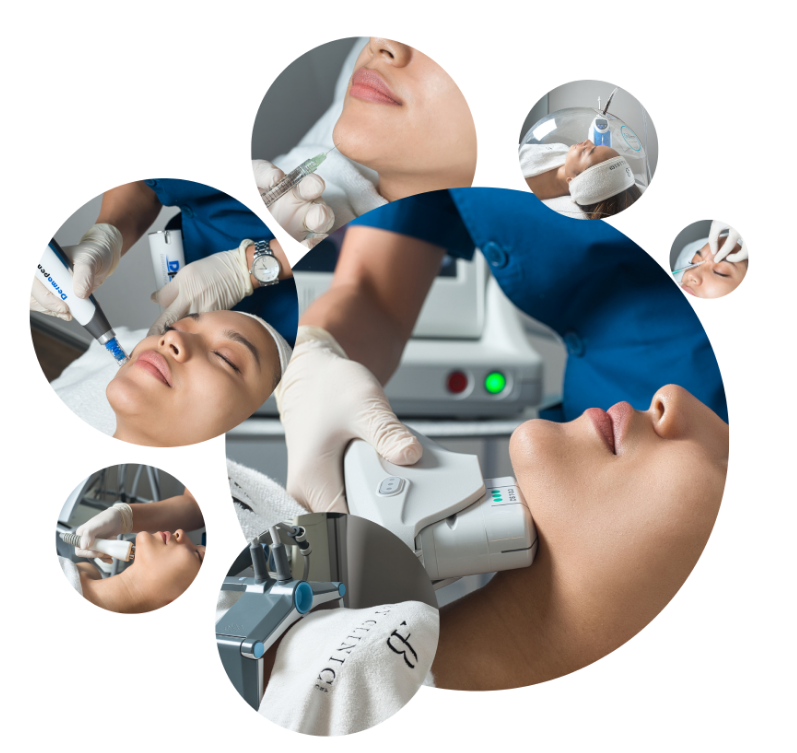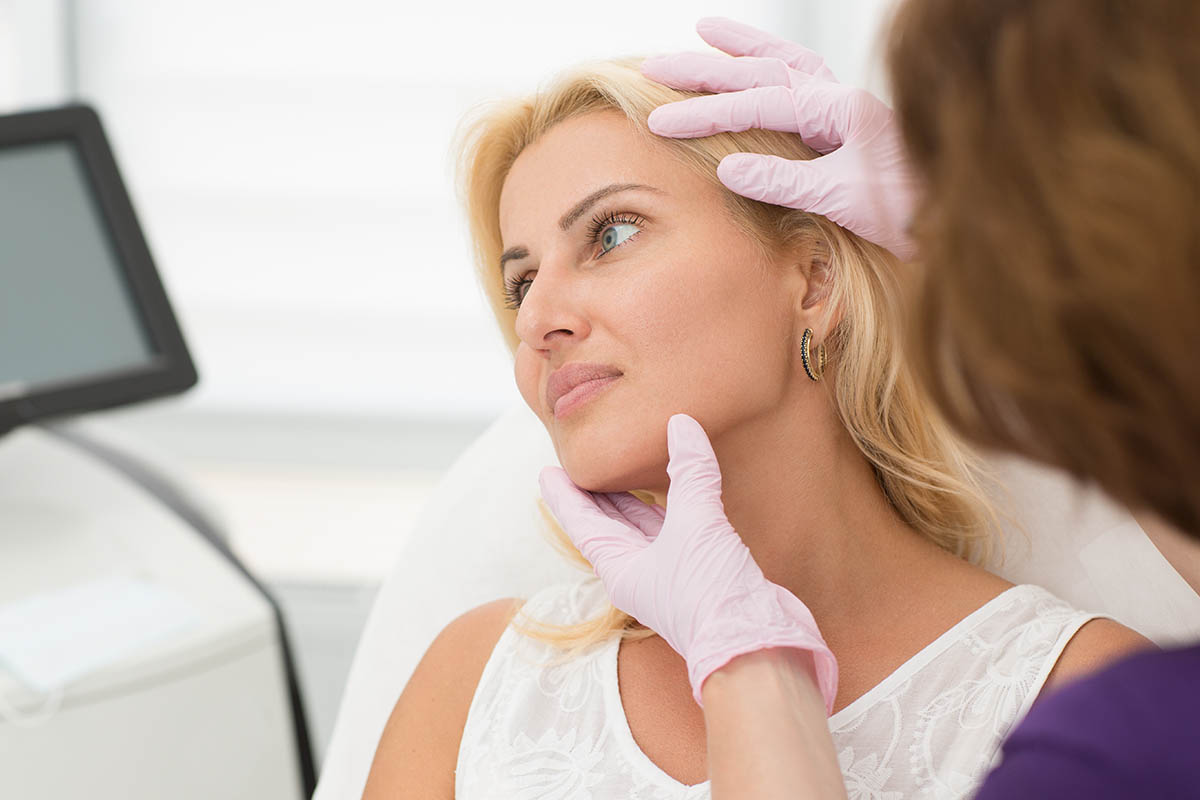Understanding the Clinically Essential Procedures Available at Aesthetic Clinics
Visual facilities play a crucial role in attending to both cosmetic and health-related concerns. They use medically required treatments that prolong beyond plain look enhancements - Eyebag removal KL. Therapies such as laser therapy and chemical peels can significantly improve skin disease while promoting total wellness. The performance of these procedures pivots on understanding their medical effects and the nuances of individual patient requirements. What factors should one take into consideration prior to selecting these therapies?
The Duty of Aesthetic Clinics in Modern Medical Care
As aesthetic clinics continue to get importance in modern-day health care, they serve not only aesthetic objectives but additionally address numerous clinical needs. These facilities typically provide treatments that exceed charm improvements, integrating procedures that can improve overall health and well-being. As an example, aesthetic clinics might offer solutions such as laser treatment for skin-related conditions, which can reduce symptoms of skin disorders like psoriasis or eczema. In addition, the combination of innovative innovations allows these centers to provide minimally invasive treatments that advertise healing and lower downtime for clients.
Skin Renewal Treatments: More Than Simply Aesthetics
Skin rejuvenation treatments include a variety of treatments made to enhance the appearance and health and wellness of the skin, typically attending to underlying medical problems. These treatments include treatments such as chemical peels, microdermabrasion, and laser treatments, which intend to improve skin texture, tone, and flexibility. By boosting collagen manufacturing and promoting cell turn over, these therapies can minimize the impacts of aging, sun damage, and ecological stress factors.
Along with visual enhancements, skin restoration therapies can additionally have significant emotional benefits. Clients regularly report increased self-confidence and confidence adhering to effective therapies. Some treatments can help alleviate problems like hyperpigmentation or uneven skin texture, which may contribute to emotional distress.

Therapies for Chronic Skin Conditions
Persistent skin disease, which can substantially impact an individual's lifestyle, often require targeted treatments to take care of signs and boost general skin health. Aesthetic clinics use various clinically necessary procedures tailored to resolve these problems, consisting of psoriasis, dermatitis, and acne.
Topical treatments, such as corticosteroids or retinoids, are commonly recommended to reduce inflammation and promote recovery. In more extreme instances, systemic therapies, including biologics, may be used to target underlying immune responses. Furthermore, light and laser treatments have actually revealed efficiency in treating conditions like rosacea and acne scars, providing patients with alleviation and boosted skin appearance.
Moreover, chemical peels and microdermabrasion can assist in exfoliating harmed skin, improving the skin's appearance and tone. By employing a thorough strategy, aesthetic clinics play an essential function in managing persistent skin problems, assisting individuals restore their confidence and enhance their overall health.
The Connection Between Mental Health and Aesthetic Procedures
How does the quest of aesthetic treatments intertwine with psychological wellness? Research indicates a significant link in between a person's self-image and their psychological wellness. Many people look for aesthetic treatments to improve their look, thinking that improvements may result in increased self-confidence and a better lifestyle. In many cases, these procedures can relieve symptoms of anxiousness and anxiety connected to body photo issues.
It is important to recognize that while aesthetic improvements can supply short-lived relief, they may not deal with underlying mental concerns. The desire for physical modification can in some cases mask deeper mental health and wellness concerns that need specialist treatment. Therefore, aesthetic clinics commonly highlight the significance of psychological wellness assessments before continuing with any kind of procedure. Recognizing the mental motivations behind these needs is essential for providing alternative care that respects both physical and psychological wellness needs.
Minimally Invasive Procedures With Medical Conveniences
What are the benefits of minimally intrusive procedures beyond aesthetic enhancements? These treatments usually offer considerable medical advantages while what do we call a skin doctor lowering recuperation time and lessening problems. For example, therapies like Botox can relieve migraines and extreme sweating, offering individuals remedy for chronic conditions. Additionally, dermal fillers can aid restore volume and enhance the appearance of scars, consequently enhancing skin wellness.
Minimally invasive methods such as laser therapy can treat numerous skin problems, including acne scars and coloring concerns, promoting total skin wellness. The precision of these treatments reduces the danger of infection and difficulties contrasted to conventional surgical treatment, enabling clients to return to day-to-day tasks swiftly.
The mental benefits, such as enhanced self-esteem and self-confidence, can contribute positively to a client's overall wellness. To summarize, minimally intrusive treatments serve double objectives: enhancing aesthetic allure and resolving underlying medical problems effectively.
The Relevance of Expert Appointment
Although lots of people might seek visual treatments for aesthetic factors, the importance of specialist consultation can not be overemphasized. Specialist assessments act as a crucial primary step in reviewing the individual's unique requirements, case history, and wanted outcomes. A competent expert can offer valuable insights right into which procedures may be ideal and necessary, guaranteeing that clients make informed decisions.
Furthermore, assessments aid to recognize potential dangers and contraindications connected with numerous therapies. This preemptive action permits a customized strategy to care, improving safety and security and efficiency.
In addition, specialist examinations foster a trusting partnership in between the individual and company, motivating open interaction regarding assumptions and concerns. This connection adds to higher satisfaction rates and far better adherence to post-procedure treatment standards. Spending time in a complete appointment is vital for accomplishing optimal results and guaranteeing that the picked visual therapy lines up with the person's wellness and health goals.
Client Testimonials: Real-Life Influence of Medically Required Treatments

Transformative Success Stories
Exactly how do medically required treatments really change lives? People at aesthetic clinics often share engaging stories that highlight extensive changes resulting from these interventions. One individual, formerly burdened by serious skin disease, reported boosted self-worth and social interaction following successful treatments. An additional patient, having problem with chronic pain as a result of an architectural issue, experienced significant alleviation and gained back mobility, enabling an extra energetic way of living. Additionally, endorsements reveal makeovers beyond physical appearance; one customer kept in mind enhanced psychological health and wellness after dealing with an enduring concern that influenced their confidence. These stories highlight the essential duty that clinically necessary treatments play in boosting overall wellness, showcasing their capability to foster not only look at this web-site physical recovery however likewise emotional and emotional rejuvenation.
Overcoming Individual Difficulties
Success stories from people at aesthetic clinics disclose extensive makeovers, however the trip commonly incorporates conquering substantial personal obstacles. Lots of people challenge ingrained instabilities, coming from traumatic experiences or medical problems that have actually affected their self-confidence. As an example, one individual shared how a rehabilitative procedure not just improved their physical look yet also alleviated years of stress and anxiety and social withdrawal. Another endorsement highlighted the psychological toll of chronic skin problems, where treatment brought about newfound self-confidence and a renewed social life. These narratives illustrate that clinically needed procedures serve not just to enhance physical well-being yet additionally to resolve mental concerns, allowing clients to recover their lives and welcome their real selves with restored vitality.
Regularly Asked Inquiries
What Credentials Should I Search for in Aesthetic Clinics?

How Can I Determine if a Treatment Is Medically Needed?
To establish if a procedure is clinically essential, one should talk to a qualified medical care expert. They can review the individual's problem, go over potential benefits, and assurance that the procedure lines up with well-known clinical standards.
Exist Dangers Connected With Aesthetic Medical Procedures?
Threats related to visual clinical treatments include infection, scarring, sensitive reactions, and frustration with results. People need to thoroughly go over possible issues with certified experts to make enlightened decisions regarding their therapy alternatives and general wellness.
Will My Insurance Coverage Cover Clinically Required Visual Therapies?
Insurance protection for medically needed visual therapies varies considerably. Individuals need to consult their insurance coverage carriers to establish certain plan details, consisting of qualification criteria, required documents, and prospective out-of-pocket expenses related to these treatments.
Just how Long Is the Recovery Time for These Procedures?
The healing time for medically required procedures differs considerably, typically ranging from a couple of days to several weeks. Elements influencing this duration include the specific procedure, private recovery rates, and adherence to post-operative treatment guidelines.